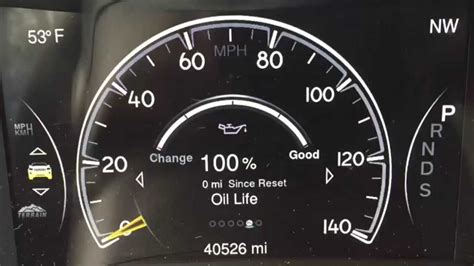Jeep Grand Cherokee Oil Light? The Ultimate Guide
Seeing that dreaded oil light illuminate on your Jeep Grand Cherokee's dashboard can be alarming. This comprehensive guide will walk you through everything you need to know about this warning sign, from understanding its causes to taking appropriate action. Ignoring this light can lead to serious engine damage, so understanding its implications is crucial.
What Does the Jeep Grand Cherokee Oil Light Mean?
The oil light, often depicted as an oil can with a drop, indicates a problem with your vehicle's oil pressure. This doesn't necessarily mean you're completely out of oil, but it signifies a critical issue that needs immediate attention. Low oil pressure can cause severe engine damage, potentially leading to costly repairs or even a complete engine replacement. The light might come on under various circumstances, making diagnosis crucial.
Why is my Jeep Grand Cherokee oil light flashing?
A flashing oil light is even more serious than a steadily illuminated one. This indicates extremely low oil pressure, and you should immediately pull over to a safe location and turn off the engine. Continuing to drive with a flashing oil light could cause catastrophic engine failure.
Why is my Jeep Grand Cherokee oil light staying on?
A consistently illuminated oil light, without flashing, suggests a less immediately critical but still serious problem. This could be due to low oil levels, a faulty oil pressure sensor, a problem with the oil pump, or even an oil leak.
Common Causes of a Jeep Grand Cherokee Oil Light
Several factors can trigger the oil light. Let's explore some of the most frequent culprits:
Low Oil Level:
This is the most common reason. Regularly checking your oil level using the dipstick is vital. If it's low, add the correct type and amount of oil as specified in your owner's manual. Avoid overfilling, as this can also cause problems.
Low Oil Pressure:
This could stem from various issues including a faulty oil pump, a clogged oil filter, a leak in the oil system, or worn-out engine components. Low oil pressure deprives critical engine parts of lubrication, leading to friction and damage.
Faulty Oil Pressure Sensor:
The sensor itself might be malfunctioning, sending incorrect signals to the dashboard. A faulty sensor might trigger the oil light even when the oil pressure is fine. A mechanic can diagnose this using specialized tools.
Oil Leak:
Leaks in the oil pan, gaskets, or other parts of the oil system can cause oil loss, leading to low oil pressure and triggering the light. Regular inspections can help identify leaks early.
What to Do When Your Jeep Grand Cherokee Oil Light Comes On
Your actions depend on whether the light is flashing or steadily illuminated:
-
Flashing Oil Light: Immediately pull over to a safe location, turn off the engine, and do not restart it. Call for roadside assistance or a tow truck.
-
Steady Oil Light: Pull over to a safe location as soon as possible. Check your oil level using the dipstick. If low, add the correct type and amount of oil (refer to your owner's manual). If the light remains on after adding oil, do not drive the vehicle. Have it towed to a mechanic for diagnosis and repair.
Diagnosing the Problem: What a Mechanic Will Do
A qualified mechanic will perform a thorough inspection to pinpoint the cause. This might include:
- Checking Oil Level and Condition: Assessing the amount and quality of the oil.
- Inspecting for Leaks: Looking for visible leaks in the oil system.
- Testing Oil Pressure: Using a pressure gauge to measure the oil pressure.
- Inspecting the Oil Pump and Filter: Checking for damage or blockages.
- Checking the Oil Pressure Sensor: Testing the sensor's functionality.
Preventing Future Oil Light Issues
Regular maintenance is key to preventing oil light problems:
- Regular Oil Changes: Follow the recommended oil change intervals specified in your owner's manual.
- Oil Level Checks: Regularly check your oil level using the dipstick.
- Visual Inspections: Periodically inspect the engine for any visible oil leaks.
- Regular Maintenance: Follow the recommended maintenance schedule in your owner's manual.
By understanding the causes and taking appropriate action, you can minimize the risk of serious engine damage and keep your Jeep Grand Cherokee running smoothly. Ignoring the oil light is never a good idea. Addressing the problem promptly is crucial for the longevity and health of your vehicle.

